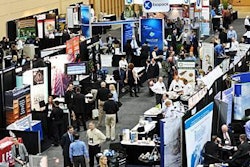The global population, currently at about 7.15 billion people, is forecast to grow to 9.6 billion people by 2050, leading to a 69% higher need for food calories, according to the World Resources Institute. Likewise, the world's pet population is expected to continue to increase, with the fastest growth in places that are also experiencing the most growth in human population or demand for food, such as China and India.
As the number of pets in these developing markets rises, so does the percentage of pets eating commercial petfood-which often competes directly with the human food industry for the same food and ingredient supplies. As food demand increases, those supplies become scarcer.
The good news is that this issue is garnering a lot of attention from agricultural and food organizations worldwide. A recent report from the International Food Policy Research Institute, for example, showed that 11 agricultural innovations may help address food scarcity, at least if used in various combinations. In aggregate, the group of technologies might help increase global crop yields by as much as 67% by 2050 while reducing food prices by nearly half. (See www.greenbiz.com/blog/2014/02/25/new-report-emerging-agriculture-technology.)
The report covered three main crops-maize (corn), rice and wheat-and also addressed climate challenges, so it looked at technologies like precision agriculture, no-till farming, drip irrigation, water harvesting, heat- and drought-tolerant plant varieties and organic farming. Noticeably missing was genetically modified organisms, or GMOs.
Some experts see GMOs as a necessary tool to address food scarcity, and they're not even particularly innovative considering they've been around for more than 100 years. In a recent guest editorial in Food Safety Magazine, Jay M. Pasachoff, PhD, a professor of astronomy at Williams College in Williamstown, Massachusetts, USA, cited GMOs' long history, commenting that he learned as a child about the work of Luther Burbank in the 19th century to modify genes and develop "hundreds of kinds of plants, even the Idaho potato (in 1871)." (You have to read the entire editorial to discover why an astronomy professor is writing for a food safety magazine!)
Yet others consider GMOs "Franken foods" and complain that consumers don't really know what they are or which foods they make up. Those concerns are valid; I know I don't completely understand GMO foods and ingredients, and I bet very few consumers do, even in Europe where most GMOs are banned by EU regulations.
Over the past year, several efforts to address the education gap have launched, mainly from US human food and biotechnology groups. For example, FactsAboutGMOs.org is backed by the Grocery Manufacturers Association, while GMOAnswers.com comes from the Council for Biotechnology Information.
A new US GMO coalition directly involves petfood and feed organizations, in addition to human food groups. The Coalition for Safe Affordable Food (CSAF, https://www.coalitionforsafeaffordablefood.org/) currently comprises 31 organizations, including the Pet Food Institute, American Feed Industry Association and National Grain and Feed Association.
CSAF's mission, going by the prominent statement on its website homepage, is "a federal legislative solution that will protect consumers by eliminating confusion and advancing food safety." In addition, the coalition seeks to affirm the Food and Drug Administration as the US "authority on the use and labeling of genetically modified feed and food ingredients."
What's missing in nearly all conversations and debates about GMOs is fact/science-based information that consumers can understand. Whether federal legislation can supply that is obviously a matter of great debate itself-I, for one, have my doubts-as is whether FDA is the right entity to implement such legislation. But at least CSAF is bringing the need for consumer information and understanding to the conversation.


















